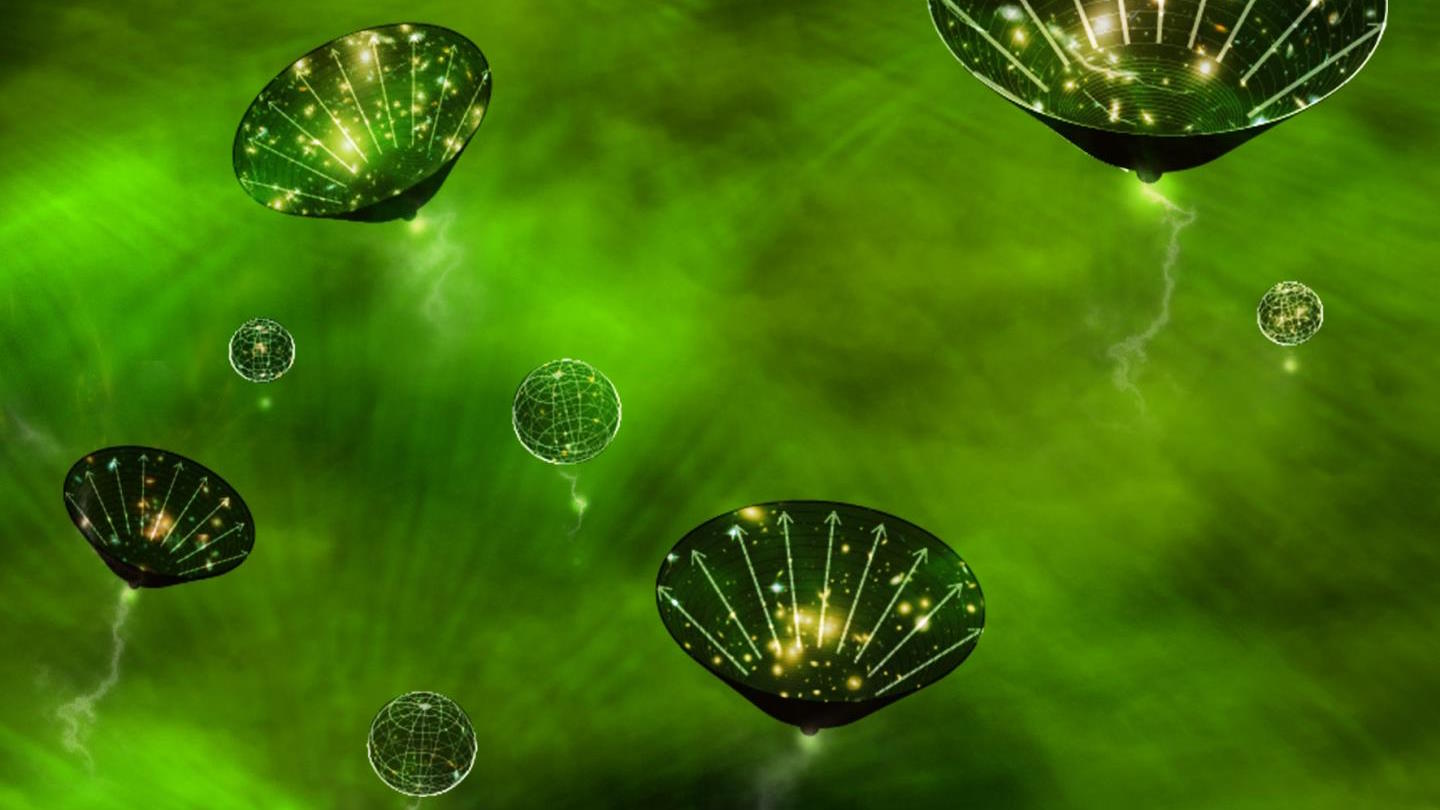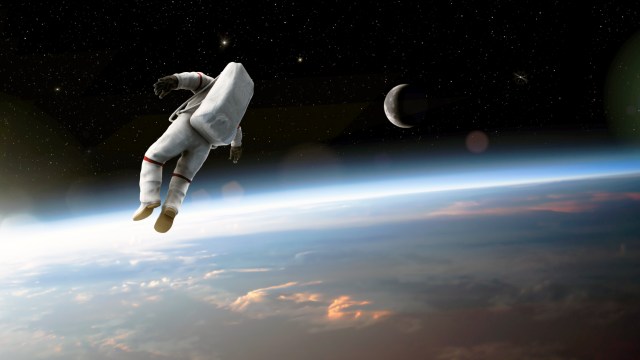Ask Ethan: Could Dark Energy Recycle The Universe?
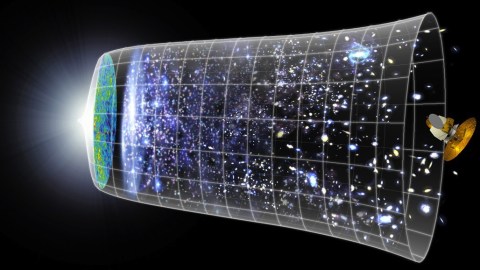
Our Universe is becoming colder, sparser and emptier. But is that its inevitable, ultimate fate?
“Quintessence is a dynamic, time-evolving, and spatially dependent form of energy with negative pressure sufficient to drive the accelerating expansion […] Whereas the cosmological constant is a very specific form of energy.”
–Robert Caldwell, inventor of the Big Rip scenario
There’s something eerily similar about the start of our Universe, a period of cosmic inflation, and the driver of the ultimate fate, the accelerated expansion of dark energy, that leads one to speculate if they might be related. In fact, this week’s chosen question comes from Andrew Gillett, who wants to know:
If eternal inflation is correct, could dark energy be a precursor to a return to that original state?
Not only is it possible, it might not even require eternal inflation to be correct. Let’s start by talking about the stage that preceded the birth of the Universe as we know it and set it up: cosmic inflation.
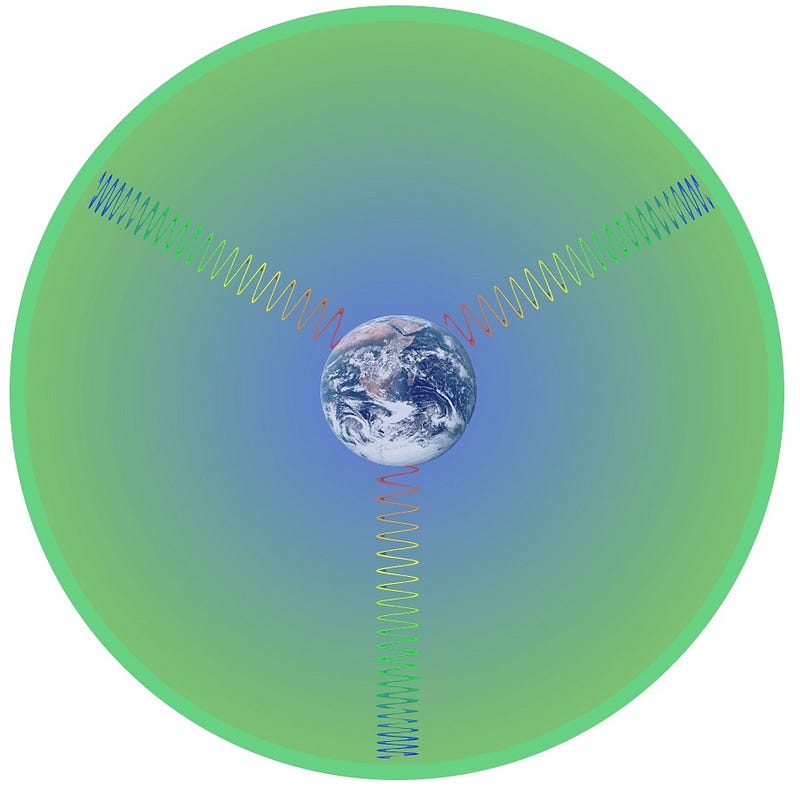
When the Universe as we know it — full of matter and radiation — began, it began with a few strange properties that didn’t necessarily have to be so: it was spatially flat, it was the same temperature everywhere, it didn’t have ultra-high-energy relics, and it had a very particular pattern of overdense and underdense regions. It’s possible that the Universe just began with these conditions in place, but the idea of cosmic inflation was that if the Universe started off with a period of exponential expansion, where there was a large amount of energy inherent to space itself, and then that period came to an end, it would create the hot Big Bang with all of these conditions already in place. It took a number of years for the consequences to be worked out properly, and it took even longer for the evidence from the fluctuations in the cosmic microwave background to validate it, but cosmic inflation is now understood to be the first thing we can point to with supporting evidence for it in our Universe’s history.
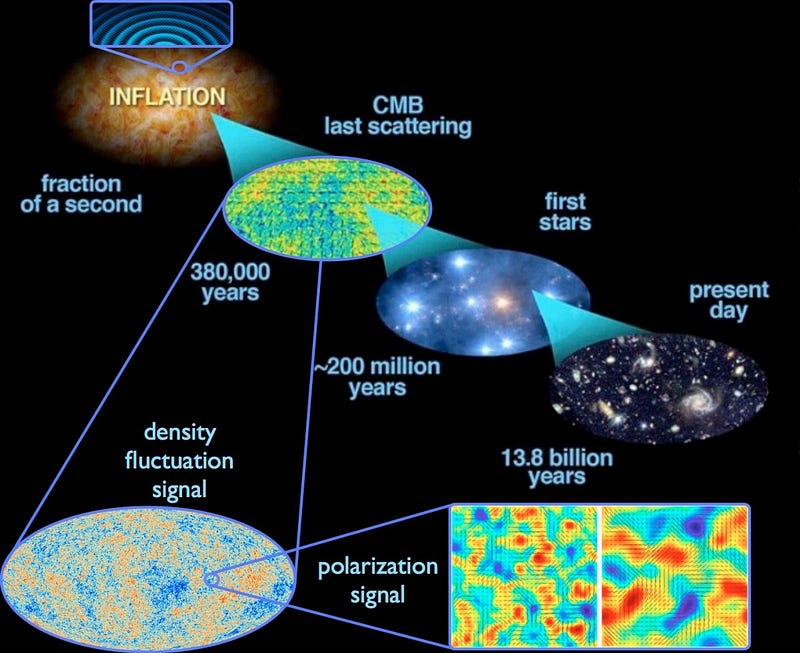
Eternal inflation is an offshoot of inflation, based on a property you might not think about very often. Normally, when you have a transition in nature — like a pot of very hot water that’s transitioning from the liquid state to the gaseous state — it happens in different locations to start, and those locations expand and merge together. In the case of boiling water, we call this “percolating,” when the small bubbles rise and merge together, creating larger bubbles by time they reach the surface. In inflation, however, you have this problem where the regions where inflation doesn’t end at a particular point in time continue to expand exponentially, and this prevents the regions where it does end from “percolating.” Our observable Universe, therefore, must all be contained within a single bubble where inflation ended, rather than being made from many bubbles that percolated together.
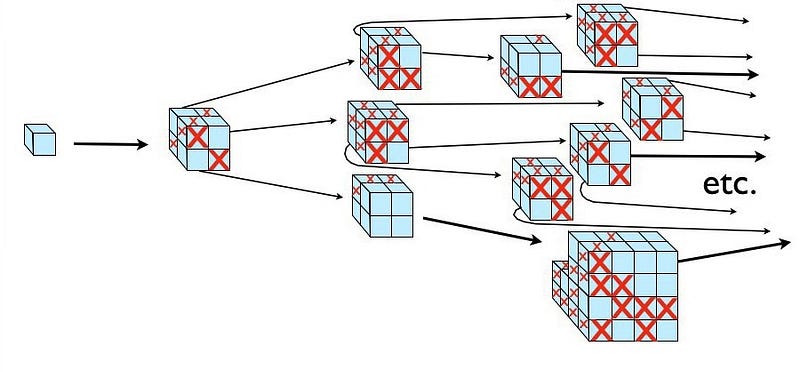
At the far other end of the spectrum, though, there’s the fact that our Universe’s expansion appears to be accelerating. The best explanation for this, to the greatest precision and accuracy we’ve measured it, is that there’s a small component of energy inherent to space itself: what we refer to as dark energy. This energy component is omnipresent — it exists at all locations equally in space — and it’s extremely small: if you converted it into mass via Einstein’s E = mc^2, it would only equate to one proton per cubic meter of the Universe. But space is not only very large, it’s also expanding! So as time goes on, this dark energy becomes more and more important, eventually, after some 8 billion years, causing the expansion of the Universe to accelerate and to later become the dominant component of energy in the Universe.
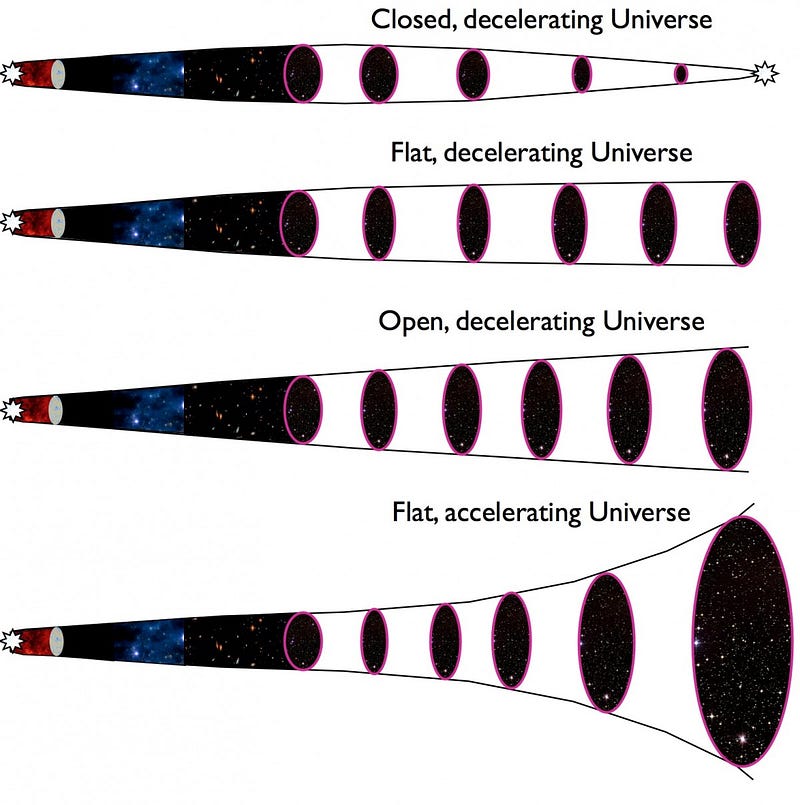
These two periods might seem very different: inflation and the late-time accelerated expansion. Indeed, the magnitude of these energy scales are different by about a factor of 10¹²⁰, which is tremendous! But they both represent energy inherent to space itself, they both cause the fabric of space to expand exponentially, and given enough time — fractions of a second for inflation and a trillion years for dark energy — they will take everything that isn’t bound together into a single structure in the Universe and drive it apart. There are a whole class of models out there, known generically as quintessence, that seek to unify inflation and dark energy.
So what are the possibilities for our Universe to recycle itself? There are two good ones.
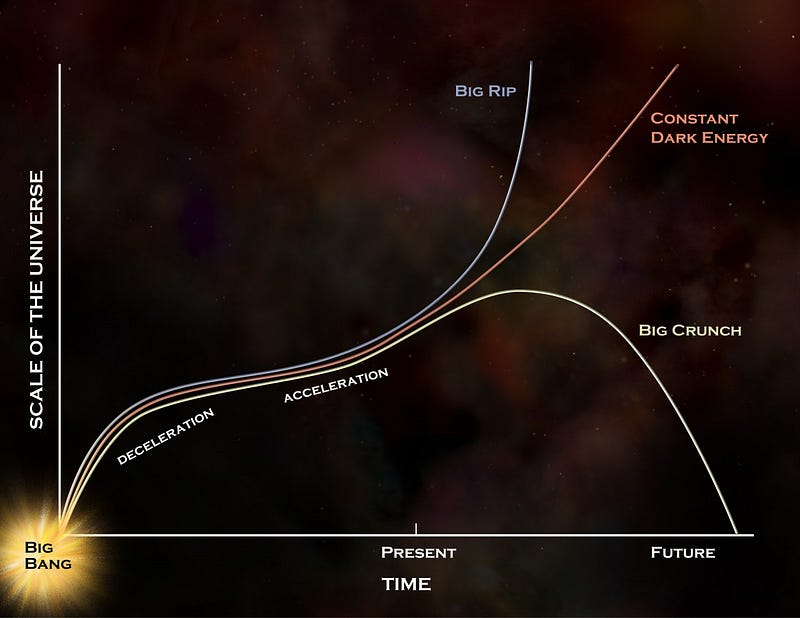
1.) If dark energy is truly a cosmological constant, it might be the leftover, relic energy from the inflationary period that started it all. And if that’s the case, there’s no reason why, given enough time, it couldn’t further decay to a much lower energy state! Perhaps that transition will give rise to a large number of extremely low-mass particles, like neutrinos, axions or something even more exotic, that may yet bind together to form their own analogues to stars, planets or even humans on long enough timescales. Just because it isn’t really accessible to us doesn’t mean it isn’t possible, and it’s one potential fate for the very long-term future of our Universe, even if it takes googols of years to occur.
2.) Dark energy may not be a cosmological constant, but may actually increase in strength over time. If it does, then it will continue to rise and rise, potentially leading to a “big rip” scenario where every bound structure in the Universe eventually tears itself apart. But under a scenario developed by Eric Gawiser, it’s possible that right at the final moment — just before space itself rips into oblivion — that energy inherent to space, which would be indistinguishible from inflationary scenarios, transitions… into a hot Big Bang! This “rejuvenated Universe” scenario may not only be in our far future, but it could make our Universe much older than it appears, possibly even infinitely old.
Right now, the best evidence we have points towards dark energy truly being a cosmological constant, meaning that scenario #2 is out. If there is no lower-energy state for it to transition to, then scenario #1 is out as well, but we don’t know enough to rule either one of them out for now. If I had to bet, I’d say the lower-energy transition is more likely, but the idea that dark energy is truly a constant that exists for an eternity is better supported by the data we have available. But until we know for sure, we have to keep our minds open to all possibilities! The EUCLID mission, NASA’s WFIRST and finally the LSST will help us measure dark energy to an even better precision, which should turn up evidence either for or against the latter of these two possibilities, while developments in theoretical high-energy physics may tell us more about the possibility of the first. No matter what, the answer to your question, Andrew, is that dark energy may herald a return to a hot Big Bang from an inflation-like state, but it isn’t dependent on inflation’s eternal nature!
Submit your questions and suggestions for the next Ask Ethan here!
This post first appeared at Forbes. Leave your comments on our forum, check out our first book: Beyond The Galaxy, and support our Patreon campaign!
